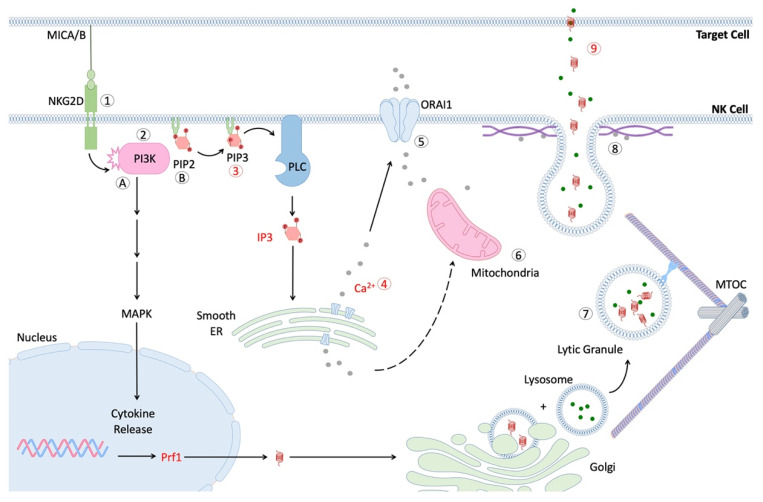Figure 1.
Scheme of NK cell signaling after formation of immunological synapse (IS). Interaction of activating receptor with cognate ligand leads to phosphorylation of cytoplasmic tail and recruitment of PI3K [61,120]. Pathway (A) activation of PI3K and PLC lead to downstream signaling via MAPK and NFκB pathways, respectively, thus facilitating the production and secretion of cytokines, such as IFN-γ. Activation of MAPK signaling also contributes to MTOC migration and the polarization of lytic granules. Pathway (B). Conversion of phosphatidylinositol-4, 5-bisphosphate (PIP2) to phosphatidylinositol-3, 4, 5-triphosphate (PIP3) allows for subsequent generation of the secondary messenger inositol trisphosphate (IP3) via phospholipase C (PLC) [117]. IP3 contributes to the release of internal calcium stores from the smooth endoplasmic reticulum [123], which in turn facilitates mitochondrial migration to IS and influx of extracellular calcium via the ORAI1 transporter [118,119]. Additionally, the microtubule organization center (MTOC) migrates towards the IS and allows for efficient transport of lytic granules (secretory lysosomes) to travel to the IS [124,125]. Lastly, lytic granules fuse with the NK cell membrane in a calcium-dependent manner and release perforin and granzymes into the IS [126]. These proteins form holes in the target cell membrane and induce apoptosis.

